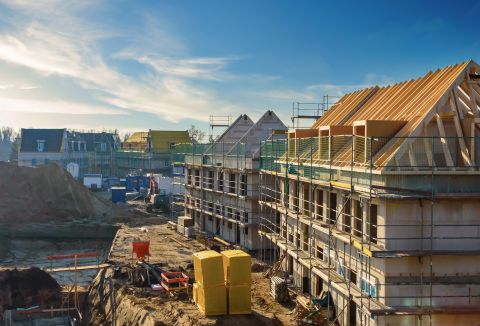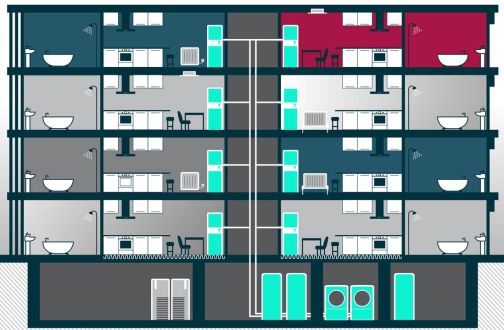
Part 2 - London Environment Strategy: A heat pump solution

Compatible with decentralised systems, capable of maximising renewable energy and with an innovative new approach, heat pumps could present the ideal solution for many of London’s numerous new apartment buildings.
Current new build dwellings in the UK are at risk of overheating due to a number of factors which include more stringent regulations on air tightness and fabric performance, increased living density, single aspect apartment design and high internal gains. This risk is exacerbated in city centre multi-residential buildings, where internal gains and solar gains can be more significant due to an increased urban living density.
Overheating can, of course, be addressed using mechanical cooling via dedicated chiller plant and a chilled water network, but this often masks the symptom without addressing the cause. It also does nothing to reduce the DER and so the financial impact of the carbon tax for London developments.
The answer could lie in using a series of ‘energy loops’ within the building, as pioneered by the unique new Zeroth Energy System from Glen Dimplex Heating & Ventilation (GDHV).
By creating such energy loops, designers can replace the high-temperature system with a cool, low-pressure system, maintained by the building’s central plant room. Low-temperature water flows around the building’s main loop to each apartment, which all have their own ‘mini loop’ where an individual heat pump produces chilled or heated water to the desired temperature. The water can then be passed to fan coils, which deliver cool or warm air into a room through vents in the ceiling or wall, or to underfloor heating, or smart electrical, fan-assisted wet radiators.
With this innovative approach, the central plant only needs to fill the balance of heating for the entire building, rather than servicing the total heating or cooling requirements of every resident at once. It is more environmentally friendly, as less total energy is required to heat and cool the entire building, and it is far more cost-effective, the benefit of which can be passed on directly to residents in the form of lower average heating or cooling bills. For installers, of course, there are increased installation opportunities too, with an individual heat pump in every dwelling.
There is another advantage too. For London developers, this system also provides an opportunity to significantly reduce the amount of carbon tax they might pay for a development. Based on the GLA recommended figure of £1,800 per tonne, the total saving when using Zeroth as the distribution system is £24 per apartment. If air source heat pumps are used instead of Combined Heat and Power (CHP), GDHV calculates a carbon tax saving of £399 per apartment – nearly £80,000 on a typical 200 plot development.
Whilst the exact figures will vary by project due to the mix of dwelling types and differences in carbon payments required by boroughs, it is clear there are benefits to this new approach for cooling and heating using heat pumps in multi-dwelling buildings. And when you can consider that modern apartment buildings now represent more than 50 per cent of the planned new build housing stock in the UK, there will be ample opportunity for installers to help realise those benefits.








